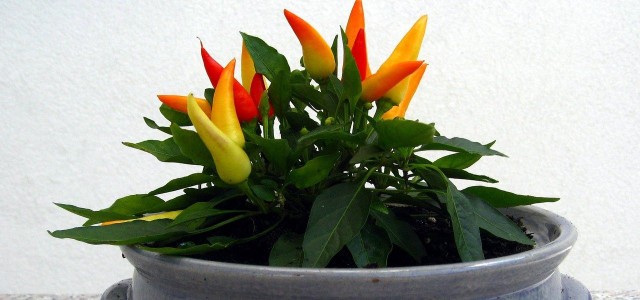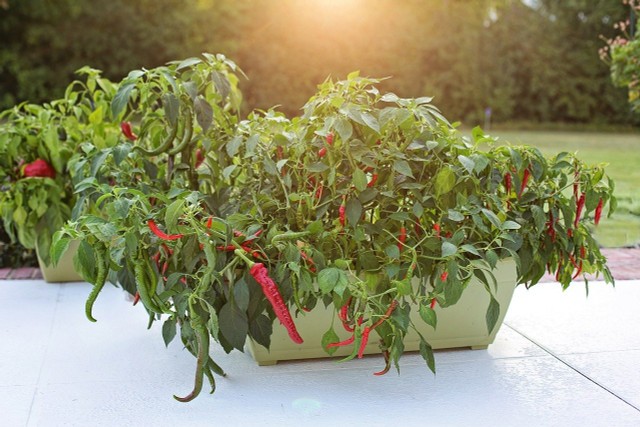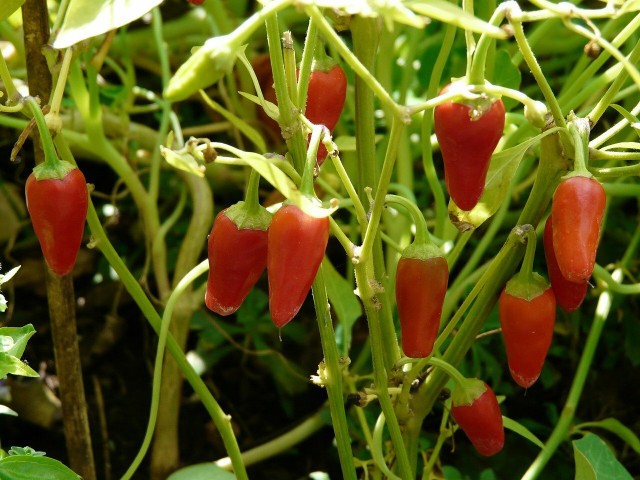
Overwintering chili is possible without any problems if you bring the plant indoors during the cold season. With what care the perennial chili plant comes well through the winter, you will learn in this article.
Chilies originate from Central and South America and are used to warm temperatures. That’s why they don’t cope well with the Central European winter: even at temperatures in the single digits, they suffer and lose leaves. They do not tolerate frost at all.
Nevertheless, it is basically possible to overwinter chili: The plant is perennial and can be brought well through the autumn and winter months with the right precautions. We show you what requirements the winter quarters must meet.
Contents
Overwintering chili: The right time

It’s best to bring the chili plant indoors for overwintering as soon as nighttime temperatures drop below 14 degrees Celsius in the fall. At this point, most chili species are not yet damaged. However, they may already be slowing their growth if they continue to remain outdoors. Some particularly sensitive species, for example Capsicum chinense, already get problems at temperatures below 13 degrees and can die.
At the latest, when it gets 10 degrees Celsius or colder at night, you should definitely bring the chili plant indoors. This way you avoid leaf loss and other damage. Do not wait until the first frost if you want to overwinter chili. No chili species can survive frosty nights.
Transplanting chili in winter
If you grow your chili plants in pots, you can move them to winter quarters relatively easily. If, on the other hand, you grow the plant in a bed, you must first transplant the chili into a pot or tub for wintering. The size of the pot or tub depends on the size of the chili plant: Its roots must be able to fit comfortably. A container that is as tall as possible is best, because chilies root in depth and not in width.
Here’s how to go about transplanting:
- Carefully dig up the chili plant. Be careful not to damage the roots.
- Fill a large enough pot or tub with substrate. Vegetable or tomato soil, for example, meets the nutritional needs of the chili. To improve permeability, you can add some sand to the soil.
- Place the chili plant in the prepared container. The top of the root ball should be slightly below the edge of the container and completely covered with soil.
- Gently press the soil down.
Chili overwinter: location and care

Chili is best overwintered indoors in a bright place. For example, place the pot on a windowsill with plenty of light. The brightest windows are on the south side. Direct proximity to a radiator should be avoided, as dry heating air is not good for the chili.
The plants do not need summer temperatures indoors: depending on the variety, 10 to 15 degrees are sufficient for their needs. It should not be colder than 10 degrees or warmer than 20 degrees. If you have a winter garden or a heated greenhouse, you can also overwinter the chili there. The plant will then need a little more care, but may also bear fruit and flowers. This is not possible under conditions in the ordinary house or apartment.
In cooler temperatures, chili needs little care to overwinter:
Make sure the soil is as dry as possible when you bring the plant indoors. The risk of mold is then lower.
Water the chili sparingly during the winter: The soil in the pot should never be wet, but moist to dry. Occasional watering is still recommended, because the plant must not dry out completely.
Chili plants stop growing at cool temperatures. Therefore, you do not need to fertilize them during this time.
If you overwinter chili at warmer temperatures – for example, in a greenhouse – it needs a little more attention:
- Water the plant regularly and keep the soil consistently moist. Also spray the plant itself with water occasionally.
- Make sure the humidity is at least 50 percent. Chili plants can dry out quickly when temperatures are warm but humidity is low.
- Inspect the plant regularly for pests such as spider mites or aphids. Especially in a warm winter quarter, the conditions are favorable for pest infestation.









